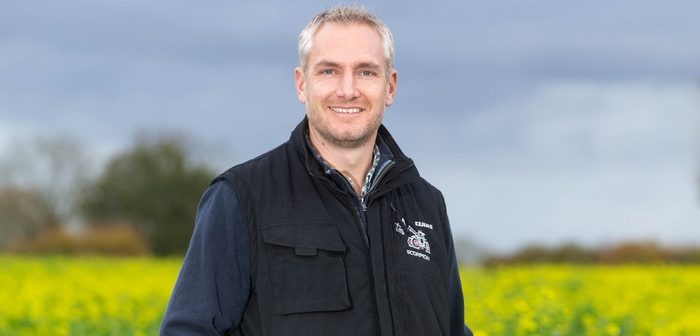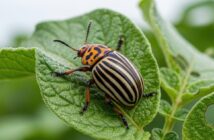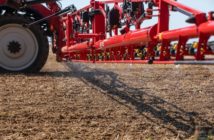A poor start hid the true potential of oilseed rape conventional variety Aspire, which came back in time to pip other hybrid varieties for yield, reports Tom Jewers, of Woodhall Farm, Rattlesden, Suffolk.
“It yielded half a tonne more than any other variety on the farm and based on this we will be using Aspire to replace our previous mainstays of Cabernet and Campus.”
Growing oilseed rape is high risk as well as high reward, so we try to limit exposure as much as possible, says Mr Jewers.
While disease resistance is key, he points out that there are agronomic strategies that he believes can help the crop too. For example, in the battle against cabbage stem flea beetle (CSFB), he has found that oilseed rape plants should not drilled too close together, so he aims for 20 plants/m2 irrespective of the crop being hybrid or conventional.
“We try to drill as early as possible so the crop has a chance to get away before CSFB numbers build, and by creating more space the crop has a chance to grow thicker stems which are just that bit more resistant to the pest.”
Reflecting on his decision-making process last year, he notes that one of the important traits he was looking for was the resistance package, particularly turnip yellows virus (TuYV).
“A few years ago when Amalie, the first variety with TuYV resistance was introduced, we were interested, but sceptical, because official figures showed it to be behind on yield.
“However, when we trialled it on farm, it out-yielded everything else, showing us that it was likely that our yields had been held back by TuYV.”
For the past few years Mr Jewers has also been growing companion crops; he started on a small scale but now they are grown across the whole farm.
“These are typically composed of mixes of berseem clover, buckwheat, and as they are susceptible to frost, they are killed off over the winter having given the oilseed rape a good start.”
Benefits from the companion crops have been general and sometimes inconsistent, and he reports that one year he saw fewer CSFB, another seemed to deter pigeons, and on a more consistent theme – they do not appear to have attracted more slugs.
Normally the oilseed rape is planted by direct drilling, but this year he has had to undertake some remedial work from wheelings in the previous barley crop.
“If you have an issue with your soil you have to go in to repair it. This means that some of the crop went into a loosened seedbed on July 27, although we were concerned that it may be more vulnerable to CSFB.
“At the moment it is markedly forward from mineralising the nitrogen (N) from the cultivated soils.
“Oilseed rape crops are a big risk, but the rewards can be equally as great, and there are no other break crops that we can grow on the farm that offer the same margins.
“Ultimately it is a case of trialling things to find out what works for you on your farm.”
Farm facts:
Total farmed area: 390ha
Home farm area: 265ha
Contract farm area: 125ha (of which 65ha has been taken on new this year)
Soil: Hanslope series medium clay soil
Seed rate: 40 seeds/m2




